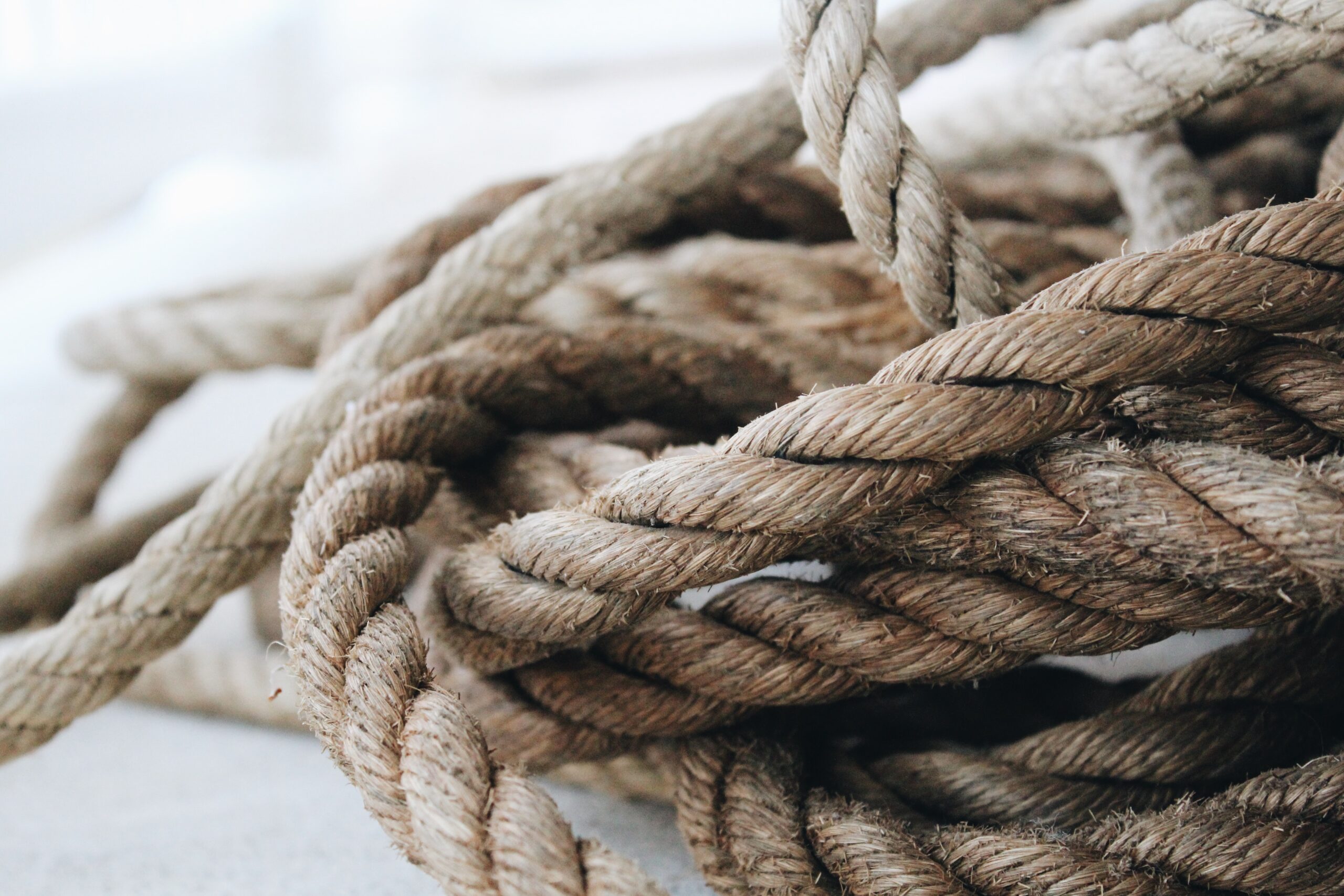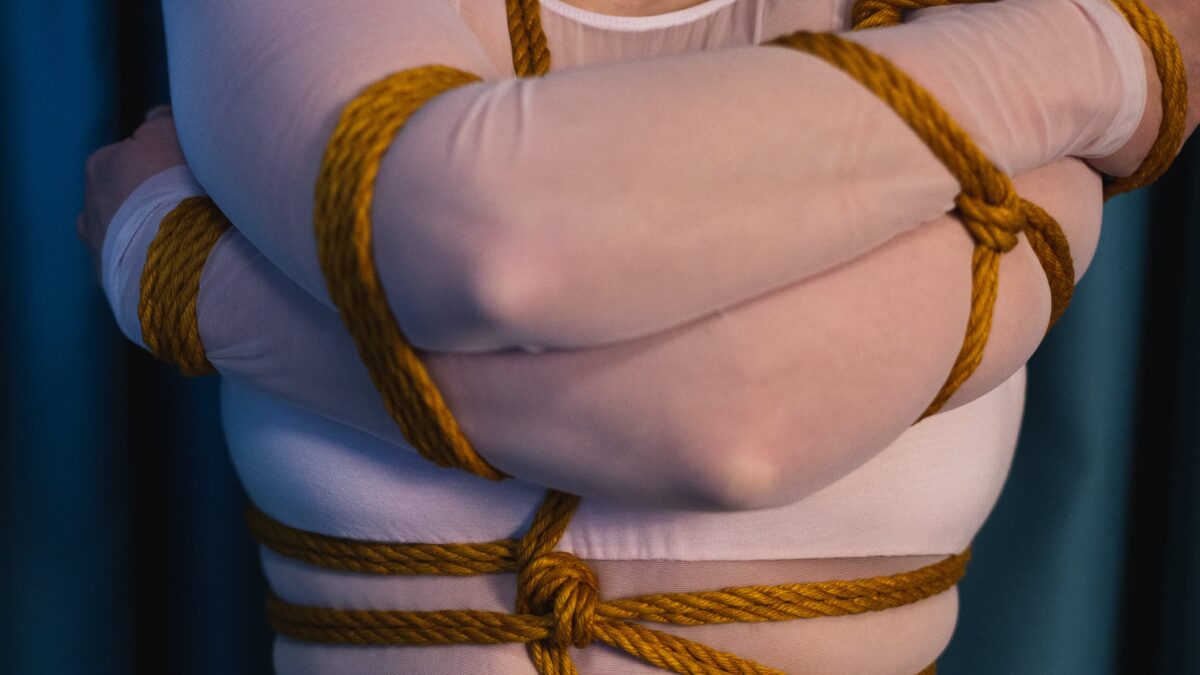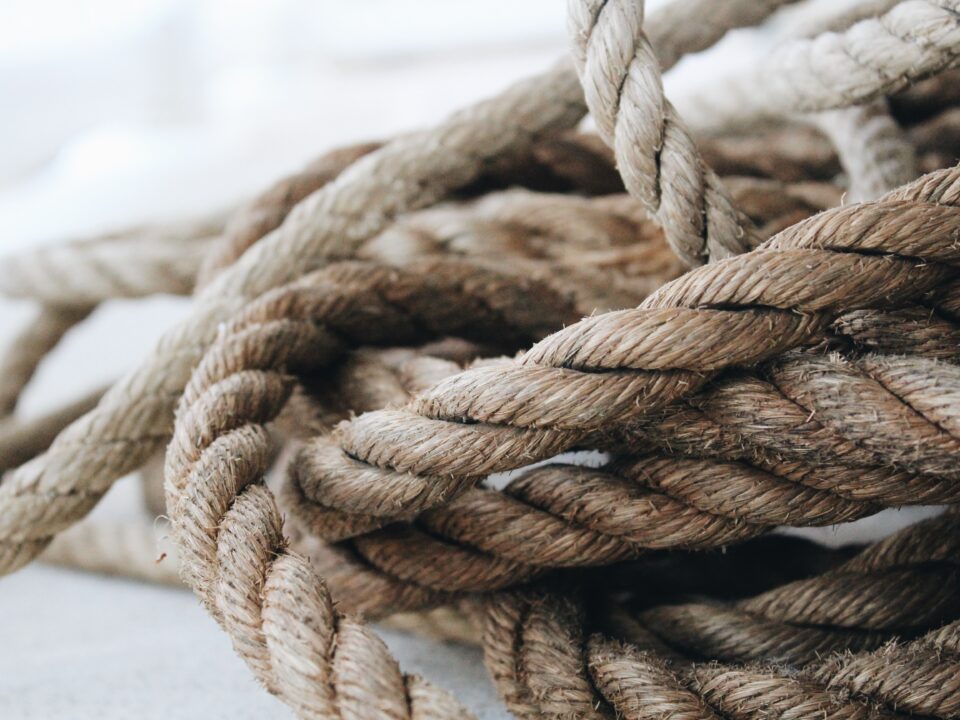
The Crucial Ingredient For Mind-blowing Play (And Why Most Tops Don’t Have It)
18 January, 2023
Everything You Need To Know About Our Pricing Policy
4 October, 2023This week’s article is meant to come in handy if and when something bad or unexpected happens during rope play. Accidents can happen even to the most experienced rigger and it is important to be aware of the risks, not panic and be able to react quickly. Here are our tips for different situations you might encounter.
Before any tying session, whether you are the rigger or the model, make sure to have an honest conversation about safety. Talk about previous injuries or health conditions that might impact tying. If you know yourself to be hypermobile or have stiffness in certain joints, make sure to mention it.
Also check in during the tying session – can they breathe properly, can they still squeeze their hands or move their fingers, have they lost any sensation in certain body parts. And make sure to always keep an eye on the clock, especially if any of you is a beginner. 30 minutes in bondage might not sound like a lot, but it can take a toll on the body. Also we don’t advise trying suspensions on people who are not already quite familiar with the feel of bondage.
List of health conditions that pose a great risk in bondage and should be communicated before tying:
- any kind of chronic diseases;
- diabetes;
- heart conditions;
- epilepsy;
- asthma.
First rule! If you are unsure, call 112 / 911. Both numbers work, 911 will automatically redirect you to a local dispatch.
Streamlined way of thinking of first aid:
- always watch the chest for 10 seconds for signs of breathing. If not breathing, call emergency services and start CPR;
- if it’s not the case of an immediate emergency, don’t move the person, but make sure they’re still breathing or conscious and call the ambulance right away;
- take control of the situation, see who can help, delegate tasks;
- if they fall on their head – do not move the person;
- if they fall on other parts of their body – check that the person is ok. If there is a possibility that the spine was injured, do not move the person!
- nerve damage – for nerve damage, remove cause of damage by moving rope rather than untying;
- fainting – for fainting, elevate legs;
- bleeding – compress.
For fainting:
- identify the cause of fainting – low blood pressure, not enough air, scared or in pain;
- lay the person on the floor;
- raise legs up, above the level of the head;
- wait for them to come around (they might not become fully conscious, but start moving);
- if they do not show any improvement at all after a minute, call the emergency services.
For nerve damage:
- remove the cause of the nerve damage;
- if in suspension, remove pressure from suspension line and then untie;
- if in floor work, grab the wraps, flip them up and then untie;
- do not massage, stretch, do not apply ice;
- heat might be useful after 48 hours;
- if function returns after a while (even 15 minutes or half an hour), it is a good sign / if they can lift the thumb at all, it is a good sign;
- if the nerve function is not clearly on the way to total recovery by the third day, seek medical attention (physical therapist in order to help the muscle while the nerve regenerates);
- nerve ripping is very rare without an open wound – it can happen, but very rarely.
For falling:
- if they don’t bump their head, neck, back, just check that the person is ok;
- if the person lands on their head, the cervical spine might be broken or damaged – the person might paralyze;
- immobilize the person, move them as little as possible;
- a fall from even 20 cm off the ground, head first, might be fatal (low probability for it to happen, but very high risk if it happens);
- immediately call 112;
- a dislocation of the cervical spine doesn’t really hurt, so the person might not be aware that they are hurt;
- the muscles spasm to protect the area from moving too much (exactly what happens with broken bones).
For cuts or bleeding accidents (falls, ripped moles, severe rope burn or pinching):
- cuts on face or head bleed a lot and look a lot more scary than they actually are;
- if the tongue is bleeding severely, identify the the source of bleeding and tamponade in order to stop it, because they can bleed to death;
- ripped moles are not dangerous; check with a doctor if the mole grows back and looks odd (asymmetrical shape, asymmetrical coloration, very large size);
- for any kind of bleeding, apply pressure;
- usually, applying pressure makes it stop; if it doesn’t stop, just keep pressing it and call 112 if you panic.
For bruising:
- apply ice on it;
- advise person to apply a heat pack or heating creams in the following days, to reduce time of bruising.
For dislocations and broken bones:
- don’t try to put it back yourself;
- try to move the body part as little as possible and keep it supported
- go to hospital or call ambulance.
For panic attack:
- talk calmly to the person;
- help them focus their minds on something else – slowly counting down and breathe in deeply can help; focusing on objects around the room also helps;
- don’t touch without consent, but beware of the gravity of the situation and act accordingly.
For epileptic seizure:
- they should communicate what your should do before you start tying at all;
- don’t cut the suspension lines; untie and then you can cut the person out of the ropes once they are on the ground and after the seizure;
- remove ropes as soon as possible, after seizure.
Information for the person in charge of event
Take a first aid course to increase your knowledge.
Before the event starts, you should decide who is in charge: event organizer / venue owner. When anything happens, be aware of the bystander effect – something happens when there are a lot of people around; everyone waits for someone else to do something (diffusion of responsibility so no action is taken).
- someone needs to step in – as an organizer, it is your responsibility to do something;
- the rigger knows what they did bondage-wise, they have to act;
- if the rigger doesn’t know what is happening, seems confused, frozen – explain what is happening;
- ideally the rigger should take down the model;
- if they can’t do it, someone else takes responsibility for taking the model down (an organizer / dungeon monitors – talk before with all those involved who is in charge);
- delegate tasks – one person calls the emergency services, one waits for the ambulance outside (often times the emergency service cannot find the exact place where they were called), one supervises accident, one makes sure that others step aside;
- if you are the only person on the scene, first call for help, then focus on the other things.
If someone takes responsibility, others will tend to fall in line and respect the instructions given to them. The bondage is the rigger’s responsibility, the problem is the organizer’s responsibility. Rope people are not necessarily good at anything else (like first aid or managing crises).
Information for Monitors
Take a first aid course to increase your knowledge. If it is a small problem with someone tying, just go ask if they need help. If the person can handle the situation, you let them handle the situation. You only intervene if you absolutely need to (rigger is panicked, doesn’t respond, doesn’t seem to realize what is happening).
If you need to get the person down:
- ask someone to lift the model and clip the carabiners if there are any;
- if no one can help, make sure you can lift the model and hold their weight;
- if you need to cut the rope to get the person down, cut next to the frictions to make the descent more controlled; it’s best to cut the rope ends and then untie the up-lines.




